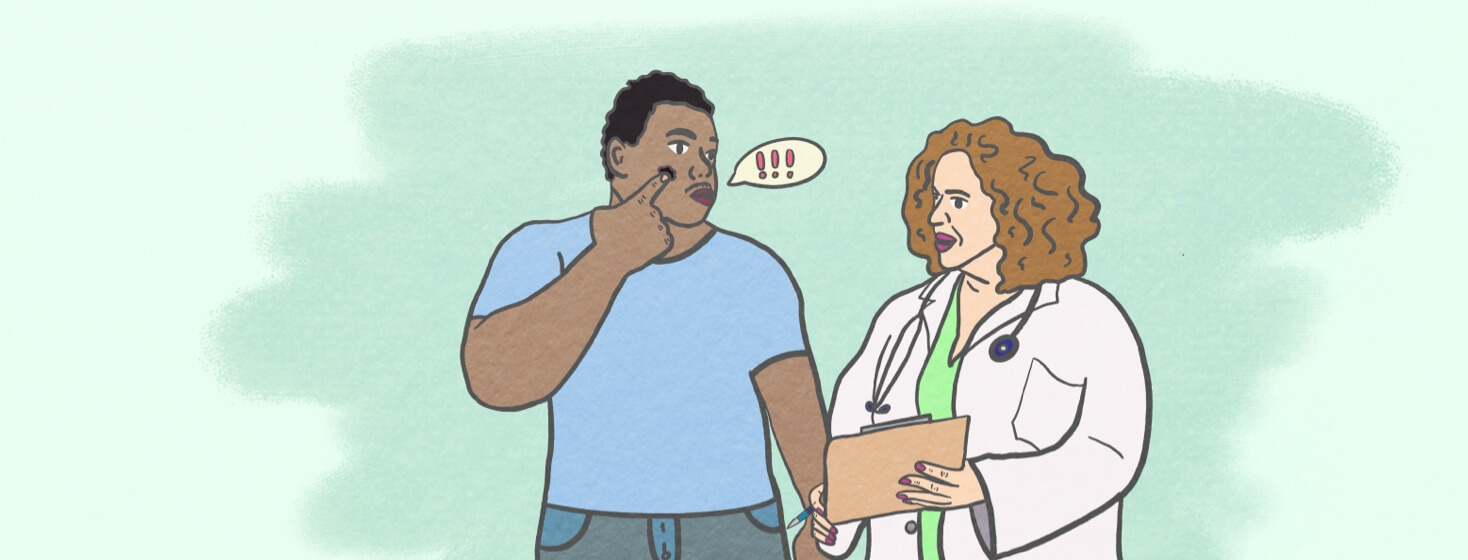Is It Okay To Demand That Your Doctor Biopsy An Area?
As a moderator for skincancer.net, I have read far too many comments from community members who've said that their doctor (or in some cases, even several doctors) told them that an area on their skin that the patient was concerned about was nothing to worry about. Sometimes it was, indeed, nothing to worry about, but too many times (let’s face it, even one time is too many times) the doctor turned out to be wrong, and the patient was misdiagnosed and was diagnosed months or even years later with skin cancer.
Trust yourself
I am quick to remind people that we are our own best advocates, and we are. No one knows our bodies as we do. People with skin cancer may get pretty darn good at picking out suspicious areas that their doctor needs to look at. Some of us are even pretty accurate in predicting whether our new area on our skin is actinic keratosis, basal cell, or squamous cell cancer.
Who decides if you get a biopsy?
Even though we may have a good idea whether or not something is skin cancer, there’s only one way to know for sure, though, and that is to have your doctor examine it and do a biopsy if needed. Who, though, determines if a biopsy is needed?
Usually it's the dermatologist
Most often, the dermatologist will determine if an area warrants a biopsy. If it does, the dermatologist will choose which biopsy procedure is best for a particular area, based on the location of the suspicious area, its size, and its depth.
There's not just one type of biopsy
According to Yale Medicine, there are several types of biopsies a dermatologist can perform, including:
- Shave biopsy, which is performed with a scalpel and used for areas that are suspected to involve mainly the top layer of skin.
- Saucerization, which is similar to a shave biopsy but the scalpel blade is at a greater angle and is used if the dermatologist suspects that the area extends deeper into the skin.
- Punch biopsy, which uses a circular blade that has a gentle turning motion. A punch biopsy is used when the dermatologist believes the area might be deeper into the skin.
- Excisional biopsy, which is performed when the area is suspected to involve the deeper dermis. An excisional biopsy is closed using sutures.
What if your doctor's not worried?
What happens, though, if you have an area you are worried about but your doctor isn’t? You have several options.
Go along with it
If your doctor tells you the area isn’t anything to worry about, you can go along with that if you have full faith in your doctor and agree that it probably isn’t something to worry about.
Get a second opinion
Another option would be to schedule an appointment with a different dermatologist for a second opinion, to see if it’s really nothing to worry about.
Insist on the biopsy
Or, you can tell your dermatologist that you want a biopsy performed. If your doctor refuses to perform a biopsy but you feel it is needed, you may want to go the route of scheduling an appointment with another doctor.
The answer's yes
So the answer to the question of whether you can demand a biopsy is a resounding yes! As a patient, you have the right to be a part of your care and treatment plan. This is your body; this is your skin cancer. You are your own best advocate, so take good care of yourself!
How would you go about navigating this situation? Would you insist that the suspicious site be biopsied?

Join the conversation